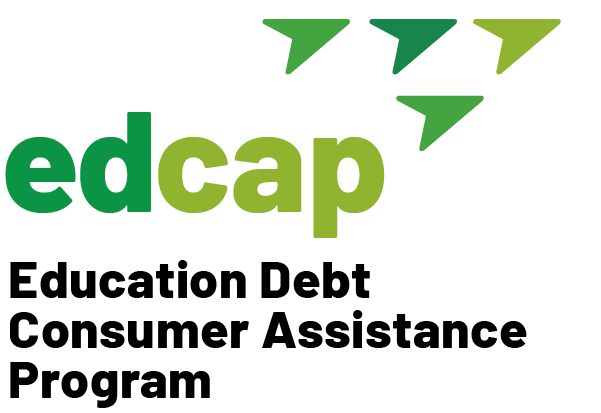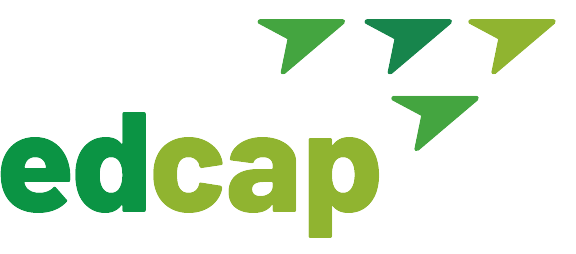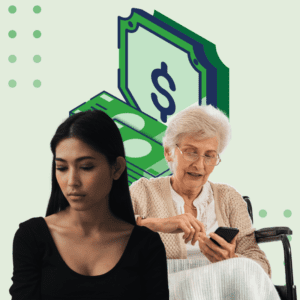Explore these programs to determine your eligibility and gain a clearer understanding of the specific requirements involved. Be sure to complete any necessary forms and diligently track your progress throughout the forgiveness process. Seek additional help if needed.
Many people don’t know this, but technically all federal student loan borrowers have the option to pursue a program called Income Driven Repayment Forgiveness (IDRF). IDRF forgives your remaining loan balance after 10-25 years of being in repayment under an Income Driven Repayment plan. That is a long time, but it may be a viable option for borrowers who have a lot of debt.
The Forgiveness Programs Everyone Should Know About: Are you missing out?
Income Driven Repayment Forgiveness (IDRF)
- Forgives your remaining loan balance after making payments under an Income Driven Repayment (IDR) plan typically from 20 -25 years. SAVE allows for earlier forgiveness if you originally borrowed the following: Less than $21,000 for undergrad only or less than $26,000 for graduate or a combination of undergrad and graduate school.
- There is no employment requirement. You must be enrolled in an IDR plan. In most cases, you have better options if you have Direct loans. If you have FFEL loans, you can achieve IDRF after 25 years in the Income Based Repayment (IBR) plan. If you have Perkins or HEAL loans or want access to cheaper repayment options for your FFEL loans, you must consolidate into Direct loans.
- Direct Parent Plus loans are ineligible for any IDR plans initially. However, after consolidation, they become eligible for the Income Contingent Repayment (ICR) plan exclusively.
- Forgiven balances in this program may be taxable starting January 1, 2026.
- Learn more with step-by-step guidance.
Public Service Loan Forgiveness (PSLF)
- Forgives your remaining loan balance after 10 years of having your loans in repayment under an Income Driven Repayment plan and working for an average of at least 30 hours per week for a non-profit or government employer.
- You must have Direct loans. If you have non-Direct loans, like FFEL, HEAL or Perkins, you can consolidate them into Direct. Understand the impact of consolidation.
- You must file the PSLF Employment Certification and Application form to confirm you have met the employment requirements of the program and track your progress.
- Complete the PSLF Employment Certification and Application form using the PSLF Help Tool
- You can track your PSLF progress through your studentaid.gov account after your employment is certified.
- Forgiven balances in PSLF are not taxable at the federal level but may be taxable at the state level. In New York State, it is not taxable.
- Learn more with step-by-step guidance.
Borrower Defense to Repayment
- Discharges remaining loan balance for borrowers who were defrauded by their higher education institution. If your school misled you or engaged in other misconduct, you may be eligible.
- You must have attended a school that engaged in misconduct, and you must have taken out federal student loans to attend that school.
- The application process involves submitting a Borrower Defense to Repayment via studentaid.gov. The U.S. Department of Education will review your application and determine whether you are eligible for discharge. The application process can be lengthy, but it’s worth it if you’re able to eliminate your debt.
- Learn more and apply at studentaid.gov/borrower-defense.
- Forgiven balances in this program are not taxable at the federal level.
Total and Permanent Disability Discharge
- Allows borrowers to discharge their remaining loan balance if they are disabled or have a chronic condition. It must be a disability that prevents you from engaging in “substantial gainful activity”—i.e., you can’t work and earn enough to support yourself.
- Disability may be proven through the Veterans Administration if you are a disabled Veteran; Social Security if you are on SSDI; or a medical certification. Applications are processed by a servicer known as Nelnet, even if you have a different servicer.
- Learn more with step-by-step guidance.
- Forgiven balances may be taxable starting January 1, 2026.
Additional Forgiveness Options
While forgiveness programs like Public Service Loan Forgiveness and Income Driven Repayment Forgiveness may not always be accessible or meet everyone’s needs, there are alternative paths that can help alleviate the burden of student loan debt. Whether you’re exploring lesser-known forgiveness options, seeking cancellation programs specific to your profession, or discovering discharge programs based on unique circumstances, we’ve captured the key aspects and need-to-know details of the different programs that may be available to you.
State-Based Forgiveness Programs
- Each state may have their own student loan forgiveness programs, often based on specific professions. Do some research to explore your options. Understand the requirements and obligations, if any.
- In New York State, visit the Higher Education Services Corporations (HESC) to find student loan forgiveness programs.
- The NYS Get On Your Feet Loan Forgiveness Program, for example, is specifically for individuals who have earned an undergraduate degree and are living in New York State; it provides up to 24 months of monthly payments towards federal loans for eligible participants.
- The program is available to those who graduated from a New York college or university, have a gross income below $50,000/yr, are enrolled in an income-driven repayment plan, and meet other specified criteria.
- Learn more.
Teacher Loan Forgiveness (TLF)
- Forgives up to $17,500 in federal loans for teachers who meet certain criteria, including teaching in a designated subject area or shortage area for five consecutive years.
- CAUTION: Time used to qualify for Teacher Loan Forgiveness cannot be used for Public Service Loan Forgiveness. If you have a high loan balance, pursuing Public Service Loan Forgiveness only may be best. Get advice before applying.
- Learn more.
Perkins Cancellation
- Up to 100% cancellation is offered to Perkins loan holders employed in certain fields or who meet other program requirements. Contact your school for more information.
- Learn more.
School Closure Discharge
- Granted to borrowers whose schools closed while they were enrolled or shortly after they withdrew and who did not complete teach outs or comparable programs elsewhere.
- Learn more.
Federal student loans are discharged upon death
- While this path might seem a bit macabre, it’s just not feasible for some borrowers to pay off their student loans, and that’s okay.
- Rest assured that student loans are discharged upon death and should not become another loved one’s burden. However, discharged debt may be taxable to the borrower’s estate starting January 1, 2026.
Bankruptcy
- Bankruptcy should be a last resort! It is not impossible, but it is difficult to discharge federal student loans in bankruptcy. You must meet the “undue hardship” test. It typically requires demonstrating that repaying the loans would cause you and your dependents an undue hardship, which is a high standard to meet.
- Seek the advice of an experienced bankruptcy attorney who specializes in student loan discharge cases. They can assess your specific circumstances, evaluate the likelihood of discharging federal or private student loans, and guide you through the legal process.








